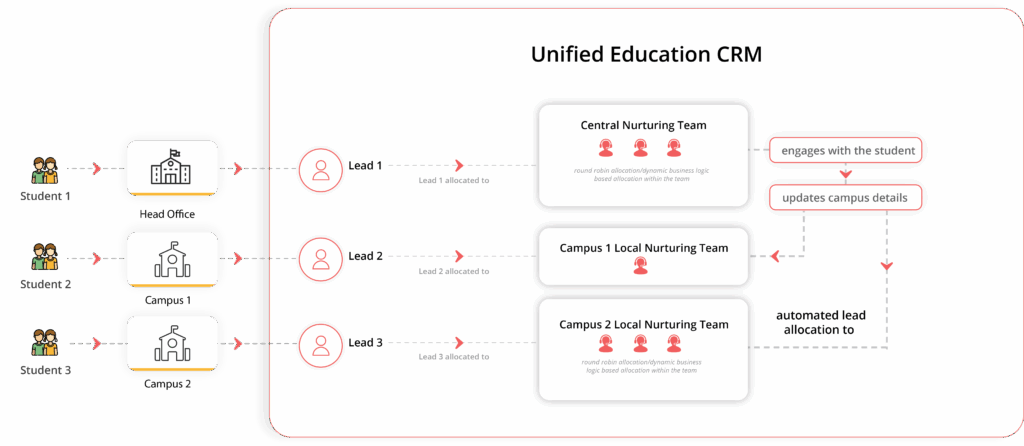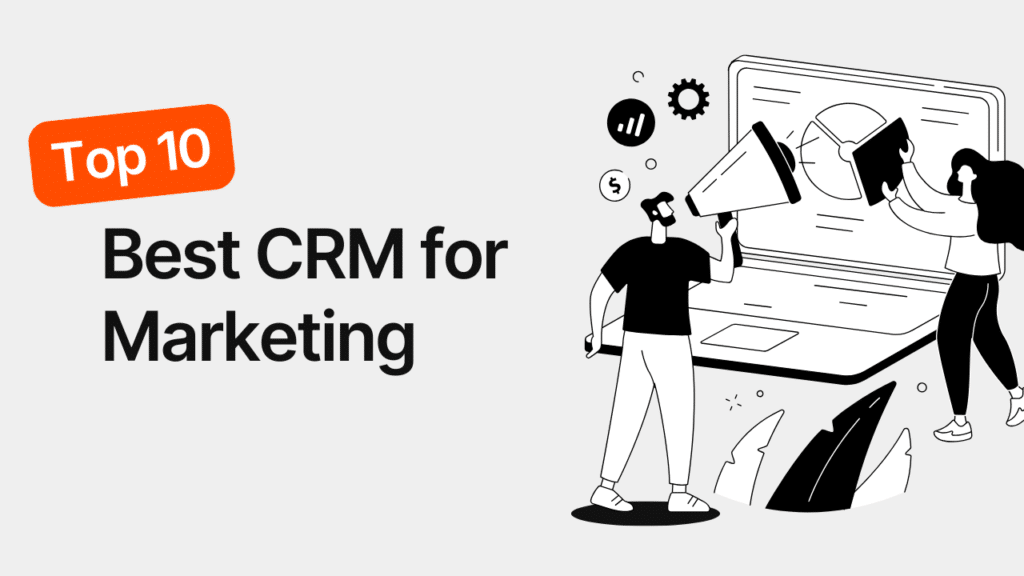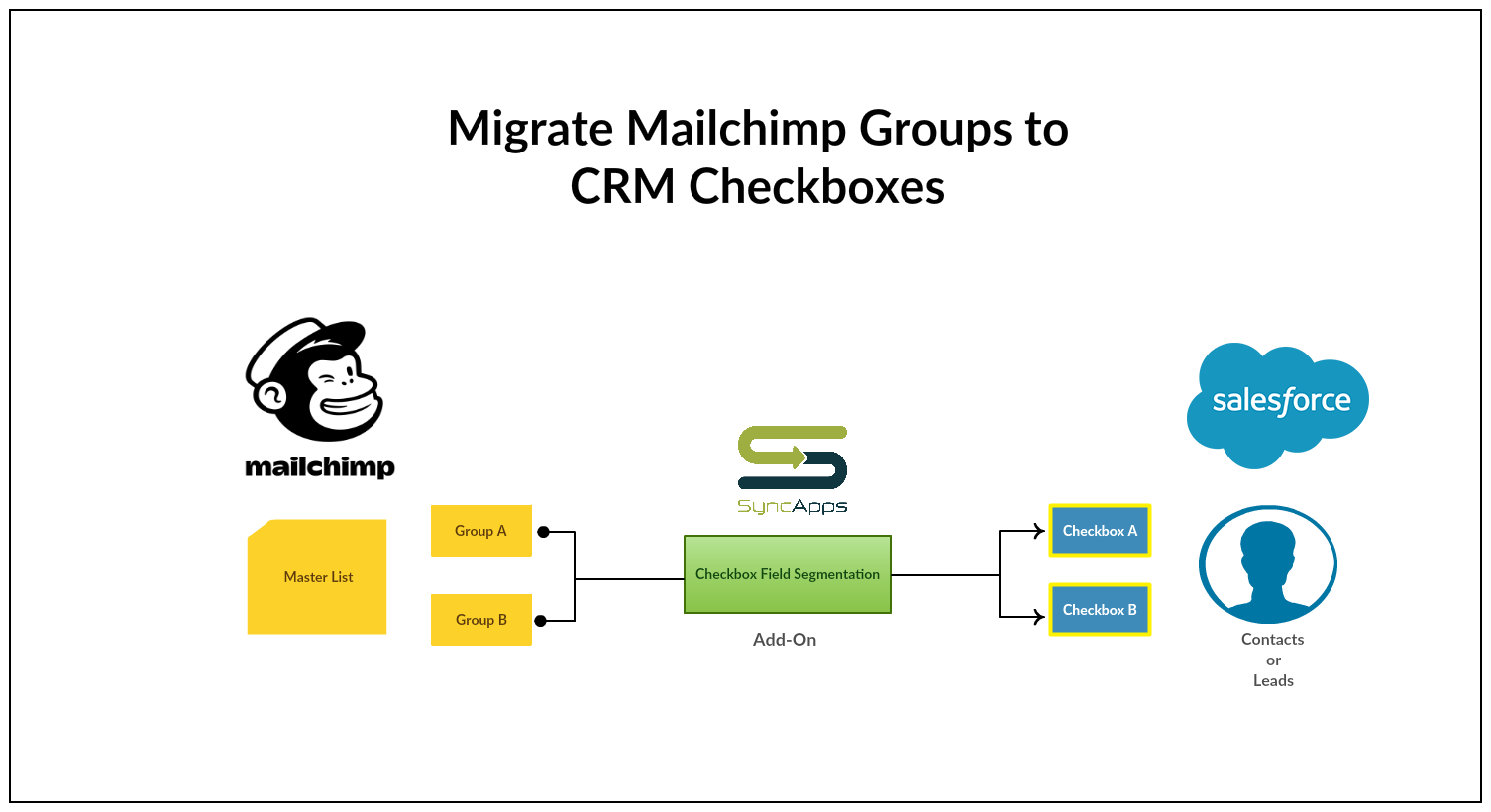
In the ever-evolving landscape of digital marketing, the ability to cultivate and convert leads is paramount. Gone are the days when a simple advertisement or a cold call could guarantee a steady stream of customers. Today, success hinges on understanding your audience, building relationships, and guiding potential clients through a carefully orchestrated journey. This is where CRM marketing and lead nurturing come into play – a powerful combination that can transform your sales pipeline and boost your bottom line.
This comprehensive guide will delve into the intricacies of CRM marketing and lead nurturing, providing you with the knowledge and strategies you need to excel. We’ll explore the core concepts, best practices, and real-world examples to help you build a robust lead nurturing system that drives conversions and fosters long-term customer loyalty.
Understanding the Fundamentals: CRM Marketing and Lead Nurturing Defined
What is CRM Marketing?
CRM, or Customer Relationship Management, is more than just a software platform; it’s a holistic approach to managing and analyzing customer interactions and data throughout the customer lifecycle. CRM marketing, therefore, encompasses the strategies and tactics used to leverage CRM data to improve customer relationships, personalize marketing efforts, and ultimately, drive sales. A CRM system acts as a central hub for all customer-related information, providing a 360-degree view of each customer, from initial contact to post-purchase support.
Key elements of CRM marketing include:
- Data Collection and Management: Gathering and organizing customer data, including contact information, purchase history, website activity, and communication interactions.
- Segmentation: Dividing your customer base into distinct groups based on shared characteristics, such as demographics, behavior, and purchase patterns.
- Personalization: Tailoring marketing messages and offers to individual customer preferences and needs.
- Automation: Automating repetitive tasks, such as email campaigns, lead scoring, and follow-up communications, to improve efficiency.
- Analytics and Reporting: Tracking key performance indicators (KPIs) to measure the effectiveness of your marketing efforts and identify areas for improvement.
What is Lead Nurturing?
Lead nurturing is the process of building relationships with potential customers (leads) throughout the sales funnel. It involves providing valuable and relevant information to guide leads through the buying journey, addressing their concerns, and ultimately, moving them closer to a purchase decision. This is not a one-size-fits-all approach; it requires a strategic and personalized approach to engage leads at different stages of their buying cycle.
Lead nurturing strategies often include:
- Email Marketing: Sending targeted email campaigns to provide valuable content, promote products or services, and nurture leads.
- Content Marketing: Creating and sharing informative content, such as blog posts, ebooks, webinars, and videos, to educate leads and establish thought leadership.
- Social Media Engagement: Engaging with leads on social media platforms, answering their questions, and sharing relevant content.
- Personalized Communication: Sending personalized messages and offers based on lead behavior and preferences.
- Lead Scoring: Assigning scores to leads based on their engagement and behavior to prioritize outreach efforts.
The Synergy of CRM and Lead Nurturing
The true power of CRM marketing lies in its ability to integrate seamlessly with lead nurturing strategies. CRM provides the data and insights needed to understand your leads, while lead nurturing provides the channels and tactics to engage them effectively. By combining these two powerful forces, you can create a highly targeted and personalized marketing experience that drives conversions and fosters customer loyalty.
Here’s how CRM and lead nurturing work together:
- Data-Driven Personalization: CRM data allows you to segment your leads based on their demographics, behavior, and interests. This enables you to personalize your lead nurturing campaigns, sending tailored messages that resonate with each segment.
- Automated Workflows: CRM systems can automate lead nurturing workflows, such as sending a series of emails to leads who have downloaded a specific ebook or visited a particular page on your website. This streamlines your marketing efforts and ensures consistent communication.
- Lead Scoring and Prioritization: CRM systems can track lead behavior and assign scores based on their engagement. This allows you to prioritize your outreach efforts, focusing on the leads who are most likely to convert.
- Improved Sales and Marketing Alignment: CRM facilitates communication and collaboration between sales and marketing teams, ensuring that leads are nurtured effectively throughout the sales funnel.
- Enhanced Reporting and Analytics: CRM provides comprehensive reporting and analytics, allowing you to track the performance of your lead nurturing campaigns and identify areas for improvement.
Building a Winning Lead Nurturing Strategy with CRM
Creating a successful lead nurturing strategy requires careful planning, execution, and ongoing optimization. Here’s a step-by-step guide to help you build a winning strategy:
1. Define Your Target Audience and Buyer Personas
Before you start nurturing leads, you need to understand who you’re trying to reach. Create detailed buyer personas that represent your ideal customers. These personas should include information about their demographics, psychographics, pain points, goals, and buying behaviors. This information will guide your content creation and messaging.
2. Map the Customer Journey
Understand the different stages of the customer journey, from initial awareness to final purchase. This will help you create content and campaigns that are relevant to each stage. Common stages include:
- Awareness: Leads are just becoming aware of your brand and products/services.
- Consideration: Leads are researching their options and comparing different solutions.
- Decision: Leads are ready to make a purchase decision.
- Loyalty: Existing customers are engaged and retained.
3. Segment Your Leads
Segment your leads based on their demographics, behavior, and interests. This will allow you to personalize your messaging and tailor your campaigns to specific groups. Segmentation can be based on:
- Demographics: Age, location, industry, job title, etc.
- Behavior: Website activity, email opens and clicks, content downloads, etc.
- Interests: Topics of interest, products viewed, etc.
4. Create Engaging Content
Content is the fuel of lead nurturing. Create valuable and relevant content that addresses the needs and interests of your target audience at each stage of the customer journey. Content formats can include:
- Blog posts: Informative articles that address specific pain points.
- Ebooks and white papers: In-depth resources that provide valuable insights.
- Webinars: Interactive sessions that educate and engage leads.
- Videos: Engaging visual content that tells your story.
- Case studies: Demonstrations of how your product or service has helped others.
5. Design Automated Workflows
Automate your lead nurturing efforts using CRM workflows. These workflows can trigger a series of emails, tasks, and other actions based on lead behavior and stage in the customer journey. For example, you could create a workflow that sends a series of emails to leads who have downloaded a specific ebook, providing them with additional information and resources.
6. Implement Lead Scoring
Lead scoring allows you to prioritize your outreach efforts by identifying the leads who are most likely to convert. Assign scores to leads based on their engagement and behavior, such as website activity, email opens and clicks, and content downloads. Focus your sales efforts on the leads with the highest scores.
7. Integrate CRM with Marketing Automation Tools
Integrate your CRM system with marketing automation tools to streamline your lead nurturing efforts. These tools can automate tasks such as email marketing, social media engagement, and lead scoring.
8. Personalize Your Communication
Personalize your communication whenever possible. Use the lead’s name, company, and other relevant information in your emails and other marketing materials. Tailor your messaging to their specific interests and needs. Personalization makes your communication more relevant and engaging.
9. Track, Analyze, and Optimize
Track the performance of your lead nurturing campaigns using CRM analytics. Analyze your data to identify what’s working and what’s not. Optimize your campaigns based on your findings, making adjustments to your content, messaging, and workflows to improve results. Key metrics to track include:
- Email open rates: The percentage of emails that are opened.
- Click-through rates: The percentage of people who click on links in your emails.
- Conversion rates: The percentage of leads who convert into customers.
- Lead-to-opportunity ratio: The ratio of leads who become sales opportunities.
- Cost per lead: The cost of acquiring a lead.
Leveraging CRM for Lead Nurturing: Tools and Techniques
Several CRM systems offer robust features for lead nurturing. Choosing the right CRM platform is essential for your success. Some popular options include:
- HubSpot CRM: A comprehensive CRM platform with powerful lead nurturing capabilities, including email marketing, marketing automation, and lead scoring. It’s a great option for businesses of all sizes.
- Salesforce Sales Cloud: A widely used CRM platform with advanced lead nurturing features, including email integration, sales automation, and reporting. It is well-suited for larger enterprises.
- Zoho CRM: A versatile CRM platform with a range of features for lead nurturing, including email marketing, workflow automation, and lead scoring. It is suitable for businesses of all sizes, and offers a more affordable option.
- Pipedrive: A sales-focused CRM platform with a strong emphasis on lead management and pipeline visibility. It provides excellent tools for tracking leads and managing the sales process.
- ActiveCampaign: A marketing automation and CRM platform with strong lead nurturing capabilities, including email marketing, automation workflows, and lead scoring. It’s a good option if you are seeking a robust marketing automation solution.
Beyond the CRM itself, here are some specific techniques and tools to enhance your lead nurturing efforts:
Email Marketing Automation
Email marketing automation is a cornerstone of effective lead nurturing. Use your CRM to create automated email sequences that deliver relevant content and offers based on lead behavior. Tools to consider include:
- Email Templates: Design professional email templates that reflect your brand and are optimized for mobile devices.
- Segmentation: Segment your email list to target specific groups with personalized messages.
- A/B Testing: Test different email subject lines, content, and calls to action to optimize your results.
- Triggered Emails: Set up automated emails that are triggered by specific lead actions, such as downloading a resource or visiting a particular page on your website.
Content Personalization
Personalize your content to resonate with each lead. Leverage CRM data to personalize email subject lines, content, and calls to action. Consider using dynamic content that changes based on the lead’s demographics, interests, and behavior. This dramatically increases engagement.
Lead Scoring and Qualification
Implement a lead scoring system to prioritize your sales efforts. Assign points to leads based on their engagement and behavior. This allows you to identify the leads who are most likely to convert and focus your sales efforts on them. This ensures that your sales team’s time is used efficiently.
Social Media Integration
Integrate your CRM with social media platforms to engage with leads on social media. Monitor social media conversations, answer questions, and share relevant content. This can help you build relationships with leads and establish thought leadership.
Landing Pages and Forms
Create dedicated landing pages for your lead nurturing campaigns. Use forms to collect lead information and capture their interest. Make sure your landing pages are optimized for conversions, with clear calls to action and compelling offers.
Measuring the Impact: KPIs for Lead Nurturing in CRM
To ensure your lead nurturing efforts are effective, it’s crucial to track and measure your progress. Here are some key performance indicators (KPIs) to monitor:
- Lead Conversion Rate: The percentage of leads that convert into customers. This is a primary measure of your lead nurturing success.
- Sales Cycle Length: The time it takes for a lead to convert into a customer. Lead nurturing can help shorten the sales cycle.
- Cost Per Lead: The cost of acquiring a lead. Optimize your lead nurturing campaigns to lower your cost per lead.
- Customer Acquisition Cost (CAC): The total cost of acquiring a new customer. Lead nurturing can help reduce your CAC.
- Website Traffic and Engagement: Monitor website traffic, bounce rates, time on page, and other metrics to assess the effectiveness of your content and lead nurturing campaigns.
- Email Open and Click-Through Rates: These metrics indicate how well your email content is resonating with your audience.
- Lead Scoring Changes: Track changes in lead scores to see how leads are progressing through the sales funnel.
- Revenue Generation: Ultimately, the goal of lead nurturing is to generate revenue. Monitor the revenue generated from your lead nurturing campaigns.
Common Challenges and How to Overcome Them
While CRM marketing and lead nurturing offer significant benefits, they can also present some challenges. Here are some common obstacles and how to overcome them:
- Data Quality: Inaccurate or incomplete data can hinder your lead nurturing efforts. Regularly clean and update your CRM data to ensure its accuracy.
- Lack of Personalization: Generic, one-size-fits-all campaigns are less effective. Personalize your messaging and offers based on lead behavior and preferences.
- Poor Content: If your content isn’t engaging or relevant, leads won’t be interested. Create high-quality content that addresses the needs and interests of your target audience.
- Insufficient Automation: Without automation, lead nurturing can be time-consuming and inefficient. Implement automated workflows to streamline your efforts.
- Lack of Integration: If your CRM and marketing automation tools aren’t integrated, you won’t be able to leverage the full power of lead nurturing. Ensure seamless integration between your systems.
- Poor Sales and Marketing Alignment: If sales and marketing teams aren’t aligned, leads may fall through the cracks. Foster communication and collaboration between teams.
- Lack of Measurement: If you’re not tracking your results, you won’t know what’s working and what’s not. Track key metrics and optimize your campaigns based on your findings.
- Choosing the Wrong CRM: Selecting a CRM that doesn’t fit your business needs can hinder your lead nurturing efforts. Research and choose the right CRM for your business.
Future Trends in CRM Marketing and Lead Nurturing
The landscape of CRM marketing and lead nurturing is constantly evolving. Staying ahead of the trends is crucial for continued success. Here are some emerging trends to watch:
- Artificial Intelligence (AI): AI is being used to automate tasks, personalize content, and improve lead scoring.
- Hyper-Personalization: Businesses are using data to create highly personalized experiences for each lead.
- Account-Based Marketing (ABM): ABM focuses on targeting specific accounts with personalized marketing campaigns.
- Voice Search Optimization: Optimizing content for voice search is becoming increasingly important.
- Video Marketing: Video is a highly engaging content format that is becoming increasingly popular.
- Chatbots and Conversational Marketing: Chatbots are being used to engage with leads and provide instant support.
- Emphasis on Customer Experience: Businesses are focusing on providing a seamless and positive customer experience.
Conclusion: Embracing CRM Marketing and Lead Nurturing for Sustainable Growth
CRM marketing and lead nurturing are no longer optional; they are essential for driving sustainable business growth. By leveraging the power of CRM data, creating engaging content, and implementing automated workflows, you can build a robust lead nurturing system that converts leads into loyal customers. Embrace these strategies and stay ahead of the curve, and you’ll be well-positioned to thrive in the competitive world of digital marketing. Remember that continuous improvement, and adapting to evolving trends, are vital for long-term success. Make sure to analyze your performance, listen to your audience, and always strive to provide value. The journey of lead nurturing is ongoing, but the rewards – increased sales, improved customer loyalty, and sustained growth – are well worth the effort.


